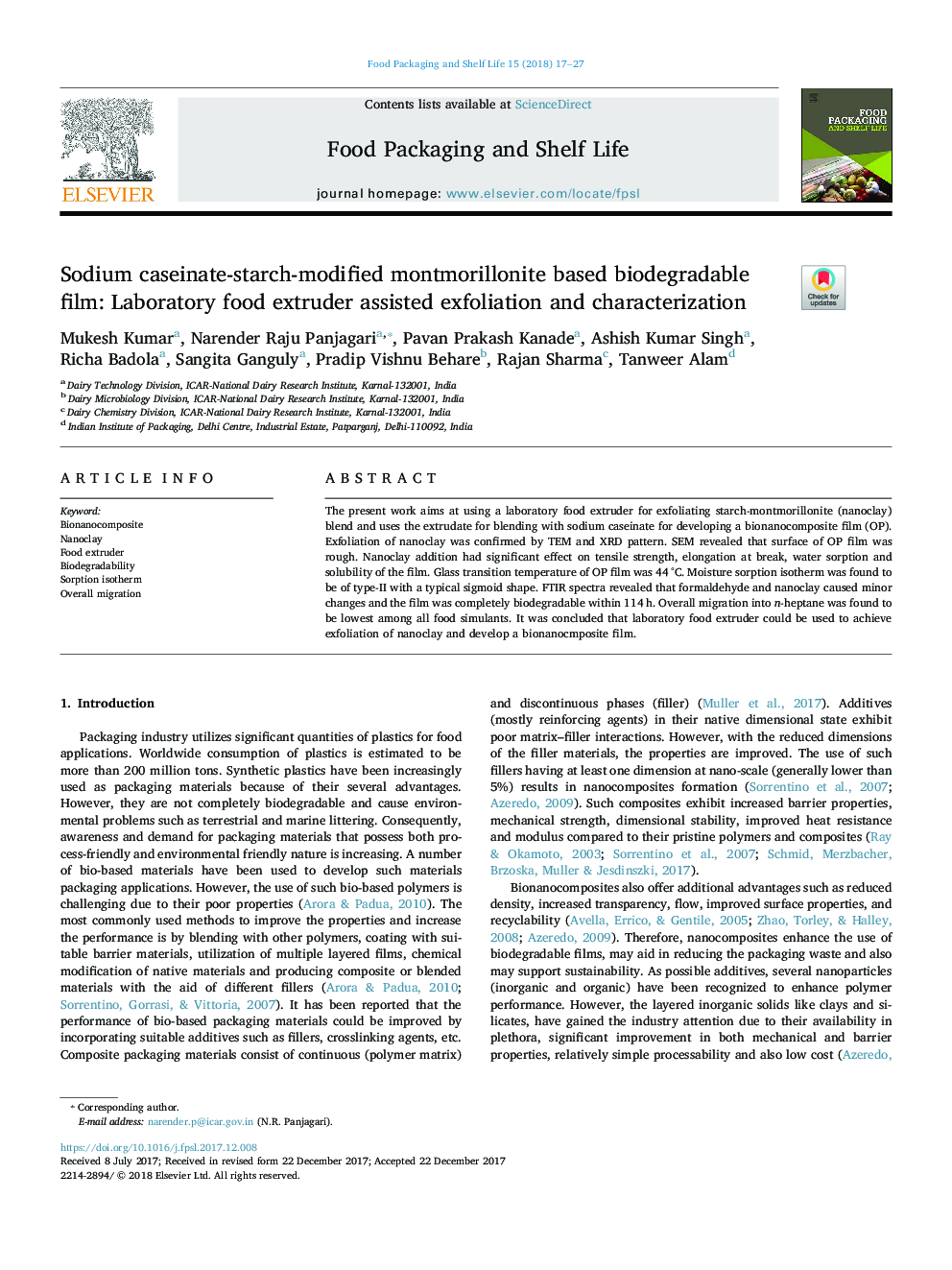| Article ID | Journal | Published Year | Pages | File Type |
|---|---|---|---|---|
| 6489245 | Food Packaging and Shelf Life | 2018 | 11 Pages |
Abstract
The present work aims at using a laboratory food extruder for exfoliating starch-montmorillonite (nanoclay) blend and uses the extrudate for blending with sodium caseinate for developing a bionanocomposite film (OP). Exfoliation of nanoclay was confirmed by TEM and XRD pattern. SEM revealed that surface of OP film was rough. Nanoclay addition had significant effect on tensile strength, elongation at break, water sorption and solubility of the film. Glass transition temperature of OP film was 44â¯Â°C. Moisture sorption isotherm was found to be of type-II with a typical sigmoid shape. FTIR spectra revealed that formaldehyde and nanoclay caused minor changes and the film was completely biodegradable within 114â¯h. Overall migration into n-heptane was found to be lowest among all food simulants. It was concluded that laboratory food extruder could be used to achieve exfoliation of nanoclay and develop a bionanocmposite film.
Related Topics
Physical Sciences and Engineering
Chemical Engineering
Bioengineering
Authors
Mukesh Kumar, Narender Raju Panjagari, Pavan Prakash Kanade, Ashish Kumar Singh, Richa Badola, Sangita Ganguly, Pradip Vishnu Behare, Rajan Sharma, Tanweer Alam,
